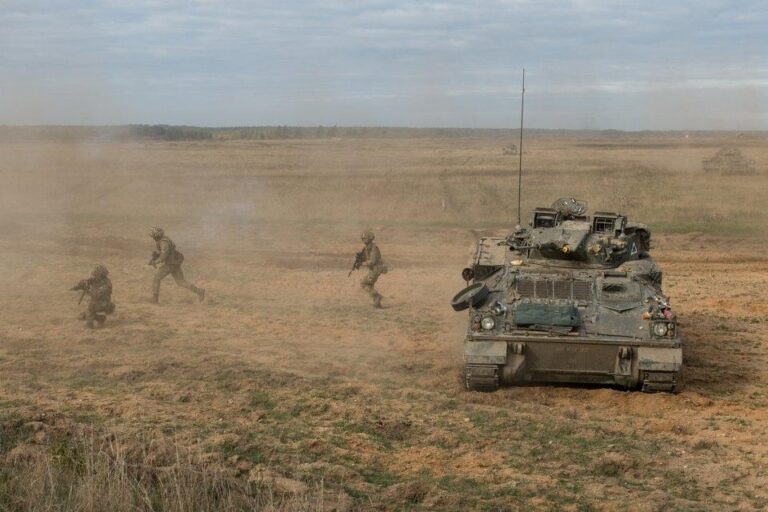The United Kingdom is among 19 countries participating in Australia’s largest-ever war exercise, a high-profile display of military cooperation and preparedness in the Indo-Pacific region. The extensive drills, set to involve thousands of personnel and cutting-edge equipment, underscore growing strategic concerns amid heightened geopolitical tensions. Analysts anticipate that China will closely monitor the exercise, viewing it as a clear signal of the allied forces’ commitment to regional security and stability. Sky News reports on the scale and significance of this multinational military collaboration.
UK Joins Multinational War Exercise in Australia Amid Rising Regional Tensions
The United Kingdom has committed significant resources to a large-scale military exercise hosted by Australia, which marks the largest war game ever conducted in the country. Alongside 18 other nations, UK forces will engage in advanced naval, air, and land operations designed to enhance interoperability and readiness amid increasing geopolitical strain in the Indo-Pacific region. The exercise showcases the deepening defense ties between the UK and its allies as they aim to reinforce a collective security framework in response to evolving challenges.
With China closely monitoring the developments, the multinational drill serves as both a demonstration of military capability and a strategic message. Participating countries include key regional and global powers, which underscores the importance of cooperation in maintaining stability. The operation features:
- Joint naval maneuvers involving aircraft carriers and submarines;
- Simulated air combat training exercises;
- Land-based coordination drills among ground forces;
- Cyber and electronic warfare components to test resilience in digital domains.
| Nation | Force Type | Key Asset |
|---|---|---|
| United Kingdom | Navy & Air Force | HMS Queen Elizabeth Carrier |
| Australia | Army & Navy | HMAS Canberra Amphibious |
| United States | Air Force | F-35 Lightning Jets |
| Japan | Naval Forces | JS Izumo Helicopter Carrier |
China’s Potential Surveillance Raises Strategic Concerns for Participating Nations
As the joint military exercises unfold, intelligence experts warn that the unprecedented scale and openness of the drills could inadvertently provide Beijing with valuable insights into the operational capabilities and strategic intentions of the 19 allied nations involved. The exercise zones, sprawling across Australian waters and airspace, present a prime opportunity for China to deploy advanced surveillance technologies, including electronic eavesdropping and satellite reconnaissance, to monitor troop movements and command communications in real time.
Participating nations are particularly concerned about:
- Potential exposure of classified tactics and protocols
- Data interception risks during joint communications
- Enhanced vulnerability to cyber-espionage resulting from interconnected systems
| Surveillance Vector | Potential Impact |
|---|---|
| Electronic Signals Monitoring | Compromise of communication security |
| Satellite Imaging | Mapping of troop deployments and logistical routes |
| Cyber Surveillance | Infiltration of command networks |
Experts Call for Increased Intelligence Sharing and Enhanced Defense Collaboration
Security analysts and defense officials emphasize that the scale and complexity of this multinational exercise underscore the urgent need for enhanced intelligence sharing frameworks among participating nations. With 19 countries involved, including the UK and Australia, harnessing real-time data exchange is considered critical to improving strategic decision-making and threat anticipation. Experts argue that standardized protocols and cutting-edge secure communication tools must be prioritized to combat increasingly sophisticated adversaries.
Moreover, defense collaboration is expected to deepen beyond conventional training drills, moving towards integrated operational planning and resource allocation. The joint exercise highlights the necessity for interoperable systems and shared logistical support to rapidly respond to regional security challenges. The following table outlines key areas where improved cooperation could significantly boost collective readiness:
| Area of Collaboration | Current Status | Potential Impact |
|---|---|---|
| Intelligence Sharing | Fragmented | Improved threat detection |
| Cybersecurity Coordination | Emerging Efforts | Enhanced defense against cyberattacks |
| Joint Logistics | Limited Integration | Faster deployment capabilities |
| Training & Exercises | Regular | Stronger operational synergy |
Insights and Conclusions
As Australia hosts its largest-ever war exercise with the participation of 19 nations, including the UK, global attention remains keenly focused on the Indo-Pacific region-and the strategic signals being sent. With China expected to observe the drills closely, the multinational display of military cooperation underscores the evolving dynamics of regional security and the growing importance of alliances in an increasingly complex geopolitical landscape. The outcomes of these exercises will likely shape defense postures and diplomatic engagements in the months ahead.




